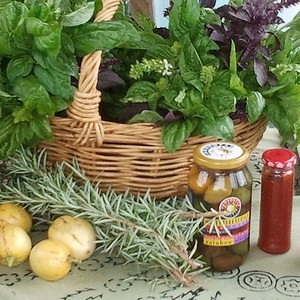I love waking up in the morning to find that my neighbour has left a basket of eggs on the back porch. I take great solace in knowing where my food comes from and how it is raised. We have a reciprocal exchange of food with our neighbours; they give us eggs and we give them produce from our garden. Because we share food, we also share stories and a sense of community.
The ability to source food from places other than grocery stores is an important step in addressing food security. Throughout history, humans relied on what they grew and on local trade to meet their dietary needs. It was more common than not to milk cows on the farm, to thresh and mill grain, to collect eggs daily and to grow produce in the fields. Today, a majority of people rely solely on the grocery store to fill their weekly shopping trolleys. The convenience and relative ease of sourcing food from the grocery store has distanced us more from our food than we have ever been in history.

Modern transportation whisks food around the globe and leaves it virtually untraceable for the consumer. Trips to the store leave us in the middle of the aisles scrutinising every label to decipher where the contents came from. If you are like me, I prefer to buy locally sourced food whenever possible.
As consumers, we are led to believe that we no longer have to wait for summer to get tomatoes or strawberries or peaches, yet if you want any flavour at all in your food, I would advise you to abstain from that tomato or peach in the middle of winter. Despite the documented health and economic benefits of eating seasonally, the notion of eating seasonally is not commonly thought about nor acted upon.
Michael Pollan, in the Omnivore’s Dilemma, affirms that the pseudo-security of seasonal produce available throughout the year hides the fragility of a food system based on non-renewable resources and the social, economic and environmental injustices attached to it. By purchasing “global” food, you may unwittingly be supporting environmental degradation, economic inequality and poor, inhumane working conditions, not to mention the incredible amounts of oil it takes to transport food.

So, what exactly is food security? The World Food Summit of 1996 defined food security as existing “when all people at all times have access to sufficient, safe, nutritious food to maintain a healthy and active life.” In addition to this, I would add that in order to have sufficient, safe and nutritious food, communities must practice and engage in civic agriculture.
Civic agriculture is an idea that promotes citizenship and environmental sustainability within rural and urban areas through economy, intimate bonds to place and physical interaction with that place. It is a ground-up model that highlights a more direct and self-reliant approach to food – from production through to consumption.
Civic agriculture can take many forms. It can be a farmers market, a CSA (community supported agriculture), a community garden or your own backyard food forest. The idea aims to move food away from being solely an economic enterprise to one that encompasses environment, people and communities.
Supporting local farmers and buying seasonal produce is definitely one way to address food security in your area. A growing body of literature and many studies show that keeping local, small-scale farmers on the land coincides with greater economic stability, income equity and healthier community infrastructure.
Additionally, taking steps to establish your own food garden has many rewards. Gardens provide us with food, help us to create a deeper connection with our surroundings, teach our children and grandchildren where healthy food comes from, builds healthy ecosystems and helps to create borderless communities where people actually know and talk to each other.
More and more commonly, urban and suburban dwellers are bringing agriculture back into the cities and suburbs. Referred to as urban homesteaders, people concerned with food security are transforming the traditional green lawns of suburbia into backyard and even front yard food forests complete with chicken coops, herbs, beehives and flowers. Yes, the food forests provide food, but they also promote a healthy environment and a medium from which to engage and communicate with those around you; they help build community. Imagine the possibilities if everyone on your block grew food and then actually shared it with one another. Imagine the variety of foods at your dinner table. Food security would be addressed on a local level AND you would actually know your neighbours.
Food security is not only about feeding your belly but also about creating a community and a culture around enjoying healthy, nutritious meals. Mealtime should be a time to reflect on the wonders of nature and to truly enjoy the harvest of your work. Michael Pollan writes,
“…as long as the sun still shines and people still can plan and plant, think and do, we can, if we bother to try, find ways to provide for ourselves without diminishing the world.”
With this in mind, help create local food security and become involved with the food that you eat, whether it is supporting local growers, digging in mulch at the community garden, buying a share with a CSA or putting on a pair of gloves and getting busy yourself.
Angela Christensen holds a Masters degree in Sustainable Communities where her passion lies in small-scale, sustainable agriculture. When she isn’t playing with her two young children, she is kept busy gardening, canning, cooking and generally hanging out in nature.



